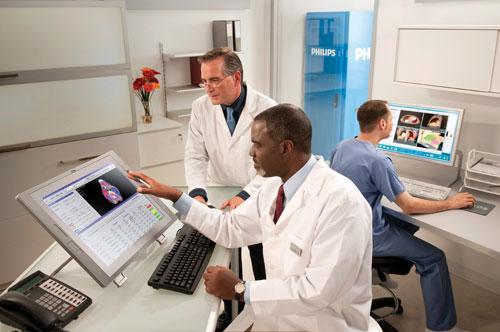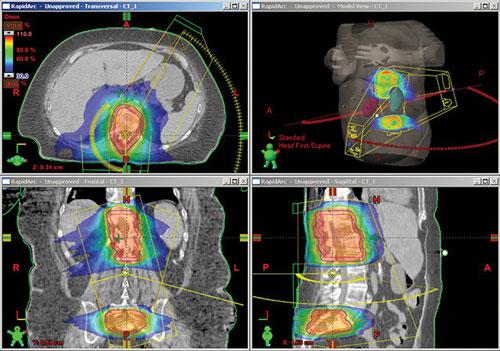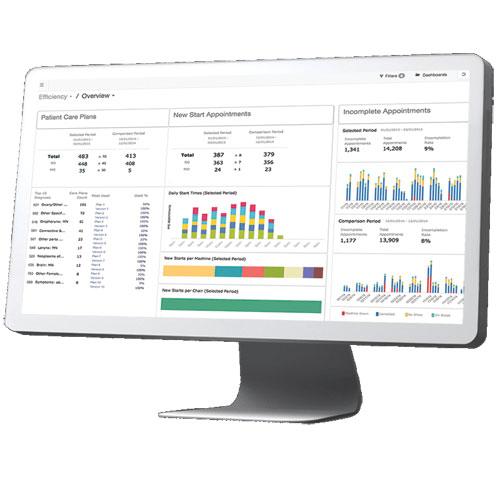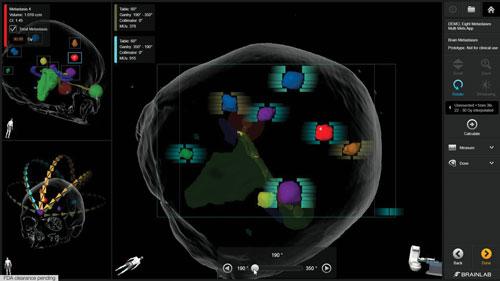
Accuray’s Delivery Analysis tracks patient procedures and compares trends across patient populations.
The American Society for Radiation Oncology (ASTRO) 2015 annual meeting drew a crowd of more than 11,000 attendees. This meeting is considered the largest gathering of radiation oncology professionals in the United States. In addition to the theme of “Technology Meets Patient Care,” the 57th annual meeting had a number of other focuses that addressed some emerging trends.
Interest in Automation is Increasing
Automation in healthcare can be an unsettling concept, especially when it comes to something as critical and precise as radiation treatments. However, the benefits of having automation are hard to ignore. Automation can help alleviate the time oncology professionals spend focusing on the mundane tasks that are a part of treatment planning, such as contouring and plan optimization. By having capabilities such as auto-segmentation, dose optimization and even auto-planning, healthcare professionals have more time to focus on the critical aspects of care. In this way, automation helps shorten the gap between patient simulation and the first day of treatment, which potentially improves patient outcomes. Accuray’s Multiplan treatment planning system features auto-segmentation and QuickPlan. Elekta offers a variety of automated tools, such as auto-segmentation and multi-criterial optimization. Philips now offers auto-planning for intensity-modulated radiation therapy (IMRT) optimization in its Pinnacle3 platform. Varian also focuses on automation with a variety of tools, such as its automatic beam geometry optimization and SmartSegmentation.
Software Enhancements Take Center Stage
Although there are definitely some exciting new hardware components in the works, the majority of vendors have placed a huge emphasis on software enhancements in order to gain efficiency from existing hardware. These enhancements are geared toward making improvements to both clinical workflow and patient outcomes. Accuray’s TomoTherapy software has received enhancements specific to breast treatments, as well as improved connectivity with Aria. Elekta’s Monaco 5.1 gives physicians the ability to plan multiple patients at the same time. Monaco 5.1 also includes MRI and forward-planning capabilities. Varian’s Eclipse 13.7 features Acuros PT, a new dose algorithm for planning proton therapy treatments, as well as optimization enhancements to BrachyVision.
Advanced Reporting Tools
With the number of different reporting tools available today, it has never been easier to organize a facility’s data into meaningful and actionable information. Reporting tools have incredible value in improving efficiency and monitoring trends within a department. Healthcare systems nationwide are looking for those tools that can quickly pull data into customizable, easy-to-use charts and graphs. Some highlights from the vendors at ASTRO in this market include Accuray’s Delivery Analysis, which tracks patient procedures and compares trends across patient populations, and Elekta’s Healthcare Analytics and Varian’s InSightive. These provide a variety of data measurement features, from monitoring patient wait times to tracking which physicians send referrals and keeping an eye on resource use. With the emphasis shifting to value-based care, reporting tools like these are going to play a huge role in monitoring facility performance and implementing new measures to improve the patient experience.
Knowledge-sharing Platforms
As the adage goes, “knowledge is power,” and we are seeing vendors offer solutions to help clinicians share and learn from one another. When healthcare professionals have access to a bank of knowledge to create standards of care, it can play a tremendous role in delivering high-quality and consistent care to all patients. While patients benefit from receiving the newest standard of care, the staff members are also constantly learning and advancing their treatment techniques based on information gained from their peers through knowledge-sharing platforms. Elekta’s Knowledge Management provides users with access to data collected through its METRIQ cancer registry solution. Facilities and organizations can access this information to build and implement best practices. Varian’s OncoPeer provides a forum for users worldwide to collaborate and share treatment best practices. When healthcare providers have the ability to work together and share knowledge to create standards of care, everyone benefits.
Cloud-based Applications
Last year, industry analysts and oncology vendors seemed uncertain of how the market would accept cloud-based technology. It is amazing how quickly things can change. In some form or fashion, cloud-based solutions are starting to pop up among all the major radiation oncology vendors. Although this is quite a change for the market, the shift toward the cloud makes sense because it does not require vendor-supplied hardware and provides instant access to the latest software updates.
Brainlab’s Elements is the prime example of cloud-based technology. Brainlab offers Elements in disease site-specific subscriptions. Users are able to choose the disease sites treated at their facility, which makes the solution highly customizable to each individual center. Because the solution is stored in the cloud, the facility does not have to worry about purchasing vendor-specific hardware and is not required to invest in maintenance agreements in order to stay current with the latest software releases. itn
Watch the VIDEO Key Trends in Medical Physics at AAPM 2016
Rachael Bennett joined MD Buyline in 2008 with seven years of clinical experience in the medical field. She is the primary clinical analyst for linear accelerators, stereotactic radiosurgery, mammography systems, biopsy systems and other radiation oncology and women’s health capital equipment. She currently holds registries as both a radiographer and radiation therapist through the American Registry of Radiologic Technologists (ARRT).






 April 18, 2024
April 18, 2024 








